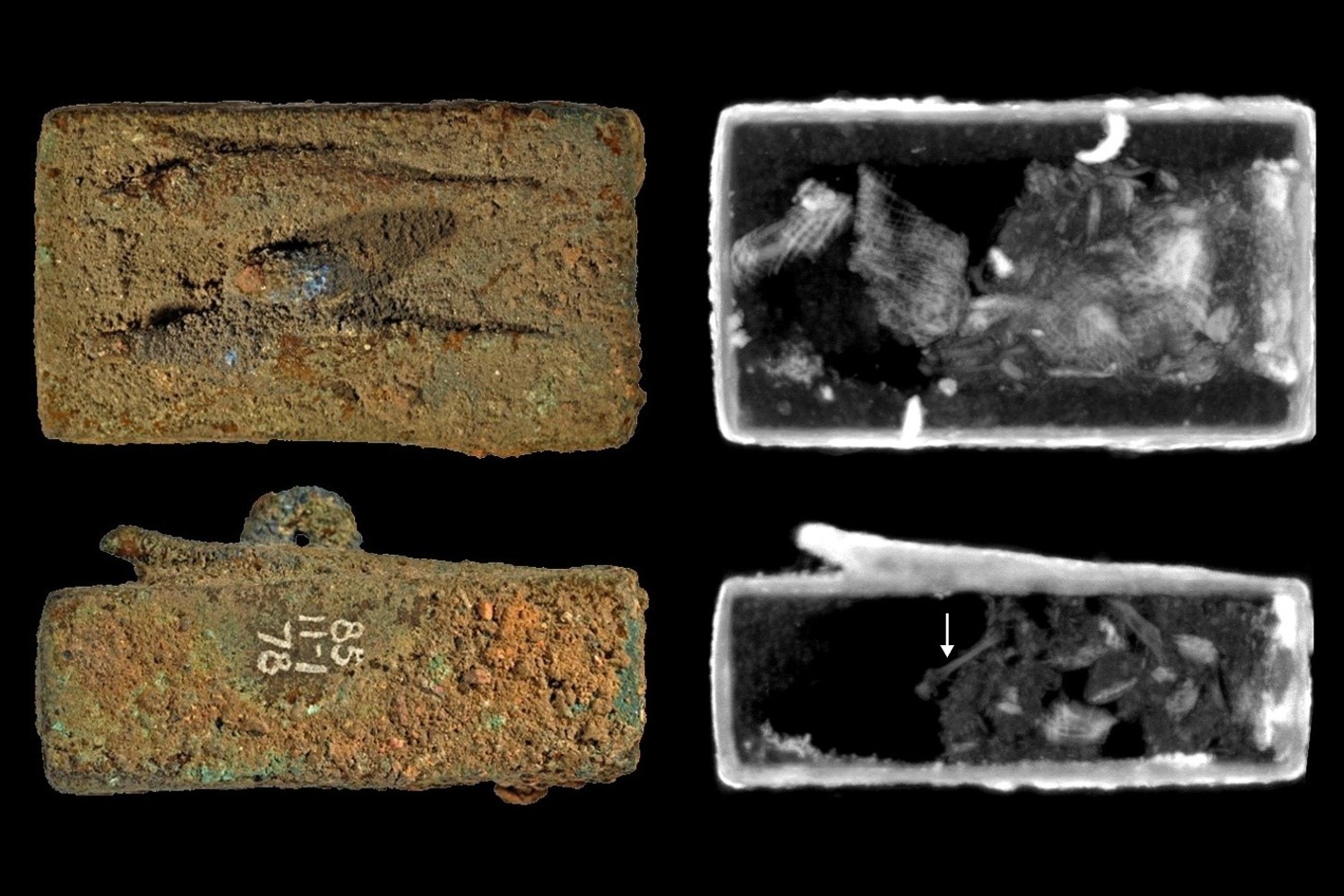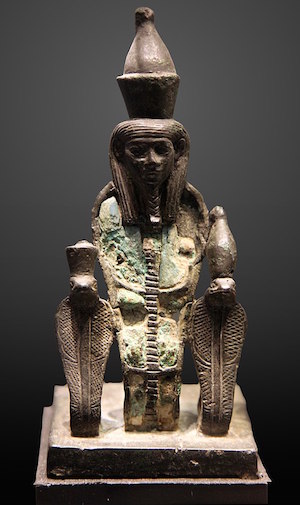
Neutron imaging of one animal coffin from the port of Naukratis in the western Nile Delta shows textile wrappings and an 8mm long bone (arrow). Credit: British Museum, UK Research and Innovation
Ancient Egyptian neutron imaging: 'Unwrapping' 2,500-year-old coffins
Researchers use neutron imaging and tomography to look inside sealed Ancient Egyptian animal coffins to see the remains
How do researchers know that inside 2,500-year-old ancient tombs are lizard mummies – without damaging the coffins to have a look inside?
A team at the Science and Technology Facilities Council (STFC) and the ISIS Neutron and Muon Source research facility in Oxfordshire, used a process called neutron imaging, a digital methodology to X-ray ancient artefacts.
With its huge potential to help archaeologists look at ancient objects without causing any damage to them – the researchers 'unwrapped' the mummies and see organic remains through their bronze or leaded copper alloy containers.
Neutron imaging is more effective than X-rays, and can see through metal
Neutron imaging uses powerful beams of subatomic particles called neutrons, which are directed at materials so that scientific instruments can investigate these materials, based on the path that neutrons take through them.
The imaging produced detailed images of the contents of six sealed first millennium BC animal coffins from Ancient Egyptian sites – without damaging the containers or the materials inside them.
Understanding Egyptian history, digitally
Found in sites such as the Nile Delta, the coffins contained bones consistent with North African wall lizards which were wrapped in textiles.
Animal mummification was a common practice in ancient Egypt, and many people mummified their pets to ensure their presence with them in the afterlife.
Though these particular lizards were not pets, researchers believe they were mummified as part of religious practices, synonymous with beliefs which thrived in the first millennium BC.
How did they know this? The lizards studied are believed to have been linked with the cult of Egyptian creators and sun gods, such as Atum.

© J Hill 2008
Atum was often depicted as a human-headed creature with a part-cobra part-eel body, which was seen on two of the coffins the team analysed.
Because Atum was such an important figure in Egyptian mythology, it goes without saying that he was widely worshipped by ancient Egyptian people.
"Neutron imaging has many important applications in 21st-century science"
Dr Aurélia Masson Berghoff, Project Curator at the British Museum said: "In the first millennium BC, lizards were commonly mummified in ancient Egypt, as were other reptiles, cats, dogs, falcons, ibises, shrews, fishes and more.
"Lizards, like snakes and eels, were particularly associated with ancient Egyptian solar and creator gods such as Atum, and perhaps in the case of Naukratis Amun-Ra Shena.
"With the help of neutron imaging, we have the potential to learn more about the ritual and votive practices surrounding these once impenetrable animal coffins, the ways they were made, used and displayed."
"With the help of neutron imaging, we can learn more about the ritual and votive practices"
Dr Anna Fedrigo, Neutron Imaging Scientist at the ISIS Neutron and Muon Source and former STFC Marie Skłodowska-Curie Fellow, added: "Neutron imaging has many important applications in 21st century science.
"This study shows that it can also shed light on the inner structure of complex archaeological objects, including their manufacturing techniques and contents."
-- Sent from my Linux system.
No comments:
Post a Comment